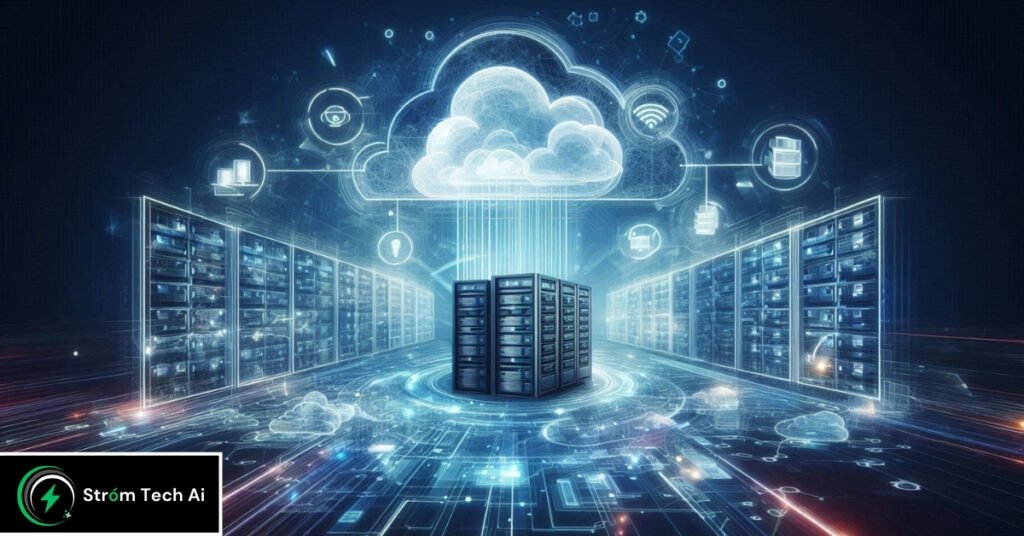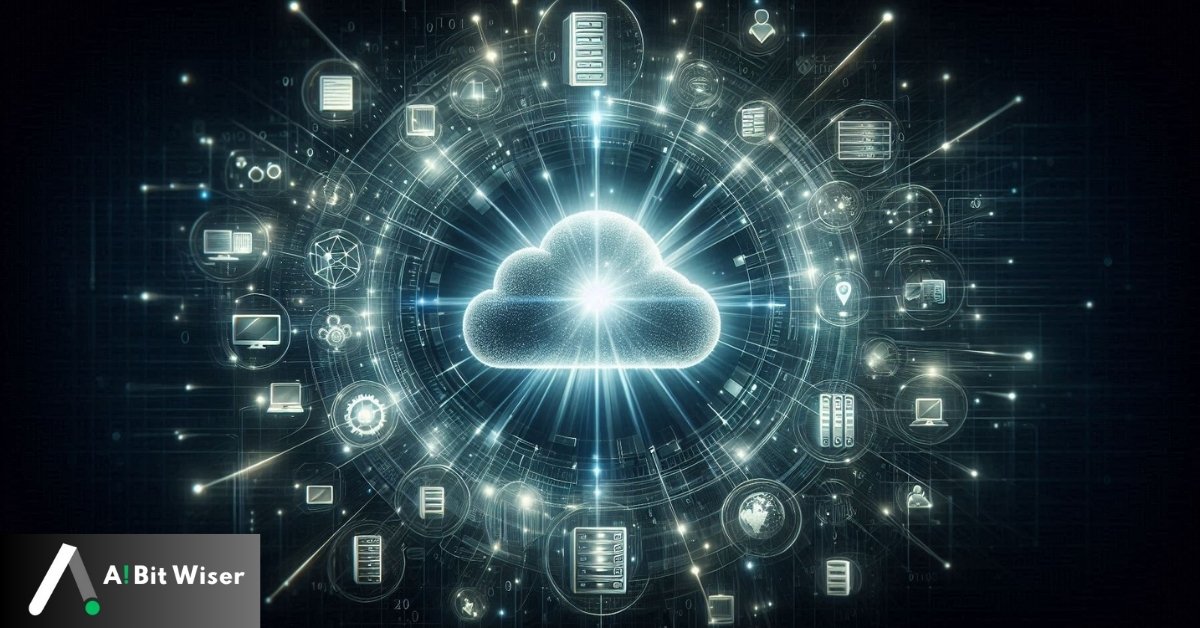Cloud Computing Role in Edge AI: The Data and Intelligence

In the rapidly evolving realm of technology, cloud computing and edge AI are two revolutionary aspects that will shape the future of data processing and artificial intelligence. Knowing how cloud computing supports and enhances edge AI is essential, given our increasing reliance on smart devices and real-time data.
So, this blog post explores the relationship between cloud computing role in edge AI, highlighting the benefits of each and projecting future developments in this area of integration.
Understanding Cloud Computing
Cloud computing has completely changed the way we organize, safeguard, and use data. It does away with the demand for a large physical structure by offering flexible and expandable information technology assets over the global web. So, below is a summary of its main elements:
- Infrastructure as a Service (IaaS): Provides virtualization, networking, and data storage, including server services over the internet.
- Platform as a Service (PaaS): Offers an environment so users may create, execute, and uphold projects without having to worry about the infrastructure that supports those applications.
- Software as a Service (SaaS): Provides software programs via internet connection in exchange for an annual subscription.
Advantages of Cloud Computing:
- Scalability: Flexibility in allocating resources according to demand: scalable.
- Flexibility: Use computer resources whenever and wherever you are.
- Cost-Effectiveness: Pay-as-you-go strategies minimize capital outlay.
What is Edge AI?
The term “edge AI” describes the use of artificial intelligence algorithms near the data source on edge devices like sensors, cameras, and Internet of Things devices. Edge AI handles data locally as opposed to traditional AI, which depends on centralized data centers. Because it has several unique advantages.
- Reduced Latency: Data processing that happens immediately on the device cuts down on the amount of time that information must travel to and from a central server.
- Real-Time Processing: Real-time processing allows decisions to be made and actions to be taken immediately, depending on the data.
- Data Privacy: Maintains privacy and complies with data protection laws by keeping sensitive data on the device.

How Cloud Computing Supports Edge AI
Edge AI and cloud computing are complementary technologies that combine to form a potent ecosystem. This is what is cloud computing role in edge AI:
Data Processing and Storage:
- Centralized Management: Data gathered from edge devices may be stored in a central location thanks to cloud computing. The result is that it is possible to store and handle enormous amounts of data, which facilitates longer-term data preservation and further examination.
- Enhanced Analytics: The processing capacity of the cloud makes it possible to do sophisticated analytics on information obtained from edge devices, producing findings that may be applied to enhance edge AI applications.
- Model Training and Deployment:
- Training AI Models: By utilizing vast datasets, cloud platforms provide strong computational resources for the training of intricate AI models. After that, these models may be put to work in real-time on edge devices.
- Continuous Improvement: By enabling the distribution of updated models to edge devices, cloud computing guarantees that AI applications benefit from the latest advancements and improvements.
- Scalability and Management:
- Scalable Infrastructure: The capacity to manage an increasing number of edge devices and the data they produce is made possible by cloud computing’s scalability, which guarantees that resources are accessible when needed.
- Unified Management: By offering tools for managing and keeping an eye on edge devices, the cloud streamlines maintenance and operations.
- Integration and Interoperability:
- Seamless Communication: Data flows easily between edge and central systems thanks to cloud computing’s ability to integrate different edge devices and systems.
- Interoperability: Cloud platforms provide the smooth integration of a variety of applications by supporting an extensive array of edge devices and technologies.
Real-world Cloud Computing Role in Edge AI
Innovation fuel cloud computing role in edge AI in several different areas. Here are a few noteworthy uses:
- Smart Cities:
- Traffic Management: To improve traffic flow and lessen congestion, edge AI systems powered by the cloud examine data from cameras and sensors.
- Public Safety: Prompt incident detection and response facilitate real-time processing of video feeds from security cameras.
- Healthcare:
- Remote Monitoring: Although cloud computing role in edge AI analyzes the data collected by Edge AI devices to deliver actionable insights and alarms based on patients’ health measurements.
- Diagnostics: Using data gathered from edge devices in medical settings, cloud-based AI models help diagnose medical disorders.
- Industrial IoT:
- Predictive Maintenance: The cloud evaluates past data to forecast maintenance requirements and avert malfunctions, while Edge AI tracks the functioning of equipment in real time.
- Operational Efficiency: To enhance production procedures and boost productivity, cloud computing enables data analysis from several edge devices.
- Retail:
- Personalized Customer Experiences: The cloud offers insights for inventory control and targeted marketing, while Edge AI analyzes consumer behavior in real time.
- Smart Shelves: Using real-time data, edge AI systems enabled by the cloud keep an eye on stock levels and improve refilling procedures.
Challenges and Considerations
Although there are many advantages to cloud computing role in edge AI, there are certain issues that must be resolved as well.
- Latency and Bandwidth:
- Balancing Act: It takes careful control of data flow between edge devices and the cloud to ensure minimum latency. But effective network protocols and data compression are examples of strategies that can be useful.
- Bandwidth Management: Effective bandwidth controls necessary to avoid bottlenecks the large amounts of data that transport between edge devices and the cloud.
- Data Security and Privacy:
- Securing Data: It’s critical to safeguard data both in transit and at rest. It is imperative to adhere to data security standards, utilize secure communication methods, and implement encryption.
- Privacy Concerns: Enhancing privacy and lowering compliance risks may achieve through making sure that sensitive data process locally on edge devices wherever feasible.
- Cost Management:
- Resource Optimization: Careful planning needs to balance the expenses of edge and cloud computing resources. Using resources as efficiently as possible and avoiding overprovisioning are two ways to properly control costs.
Future Trends and Developments
Cloud computing role in edge AI has a bright future together, and their integration shaped with numerous new trends:
- Advancements in Cloud-Edge Integration:
- Improved Technologies: Cloud computing and edge AI may now combine more effectively and efficiently thanks to advancements in cloud-edge integration technologies.
- Increased Automation: AI models may now more easily managed and deployed across edge devices and the cloud thanks to automation tools and platforms.
- Increased Adoption of 5G:
- Enhanced Connectivity: 5G wireless technology promises reduced latency and quicker data transfer rates, which will boost the efficiency of edge AI and cloud computing applications.
- Real-Time Processing: By allowing real-time processing and examination of massive data volumes, 5G will support more complex edge AI applications.
Conclusion
Our understanding of artificial intelligence and data processing is changing as a result of cloud computing role in edge AI. Organizations may develop effective solutions that stimulate creativity and improve operational efficiency by utilizing the advantages of both technologies. The future of smart apps and systems will greatly influence the combination of cloud computing role in edge AI. This is because technology is always evolving.
To succeed in the digital age and remain competitive, organizations and developers must comprehend and leverage the advantages of cloud computing in edge AI applications. But leverage edge AI and cloud computing to open up new avenues and propel your company ahead.
FAQs: Cloud Computing Role in Edge AI
What is the cloud computing role in edge AI?
Because it offers the infrastructure and resources required for AI development and implementation, cloud computing is essential to artificial intelligence (AI). To be more precise, cloud computing makes possible:
- Scalable Computing Power: Cloud services offer virtually unlimited computing resources needed for training complex AI models.
- Data Storage and Management: The cloud is an effective place to store and manage the vast amounts of data needed for artificial intelligence.
- Model Training and Deployment: AI model deployment and training possible using robust cloud-based infrastructure, after which the models available for real-time usage.
- Integration and Interoperability: Cloud platforms facilitate interoperability with many AI tools and services, augmenting the capability of AI applications.
- Cost Efficiency: Businesses may expand their AI initiatives without having to make a sizable upfront investment thanks to pay-as-you-go cloud pricing structures.
What is the role of AI in edge computing?
By allowing sophisticated processing and decision-making to occur directly on edge devices rather than depending on centralized cloud servers, artificial intelligence (AI) improves edge computing. AI plays important roles in edge computing, such as:
- Real-Time Processing: Local data processing by AI algorithms on edge devices allows for quick analysis and reaction.
- Reduced Latency: Artificial intelligence (AI) improves application performance by reducing latency in data transfer to and from the cloud by processing data at the edge.
- Enhanced Privacy: By keeping sensitive data local, AI on edge devices lowers the possibility of data breaches and enhances privacy.
- Efficient Resource Use: Artificial Intelligence makes the most use of edge devices’ computing resources, guaranteeing efficient performance even with constrained hardware.
- Autonomous Operations: AI allows edge devices to function alone, making choices and acting without contacting the cloud. This knows as autonomous operations.
Is cloud computing part of edge computing?
Although they are different technologies, edge computing and cloud computing work well together. So, though they function separately, they complement one another to improve overall application speed and data processing.
- Cloud Computing: Through the internet, it offers centralized processing, storage, and computing capacity.
- Edge Computing: Moreover, edge computing reduces latency and bandwidth consumption and by processing data on edge devices closer to its source.
By providing extra processing power, data storage, and sophisticated analytics capabilities to supplement the local processing carried out by edge devices, cloud computing facilitates edge computing. But combined, they produce a computer environment that is more responsive and efficient.
What is the role of edge computing?
Because edge computing moves data processing and decision-making closer to the data source, it plays a big part in modern computing. Because among its principal functions are:
- Reducing Latency: By processing data locally, computing on the edge reduces the time it takes for data to travel through central servers.
- Improving Speed: The use of edge computing allows for real-time processing and quicker responses by managing data close to its source.
- Enhancing Data Privacy: By reducing the need to send personally identifiable information over networks, data at the edge improves security and privacy.
- Optimizing Bandwidth: By lowering the volume of data transferred to the cloud, edge computing helps to save traffic and relieve network congestion.
- Supporting Autonomous Systems: This lets gadgets operate on their own and make choices without having to depend on continuous cloud access.
What are the five benefits of edge computing?
The following benefits of edge computing improve the efficiency of data processing and applications:
- Reduced Latency: Edge computing reduces latency by processing data near its source, which results in quicker reaction times.
- Improved Speed: The decision-making process and real-time analytics expedit local data manufacturing, which improves system performance as a whole.
- Enhanced Data Privacy: Edge computing lowers the possibility of breaches of information during transmission by storing sensitive data locally on machines.
- Optimized Bandwidth Usage: This technique lessens congestion in networks and conserves bandwidth by sending less data to the cloud.
- Support for Autonomous Operations: Provides the ability for gadgets and programs to function autonomously and make choices without being dependent on continuous cloud access.










